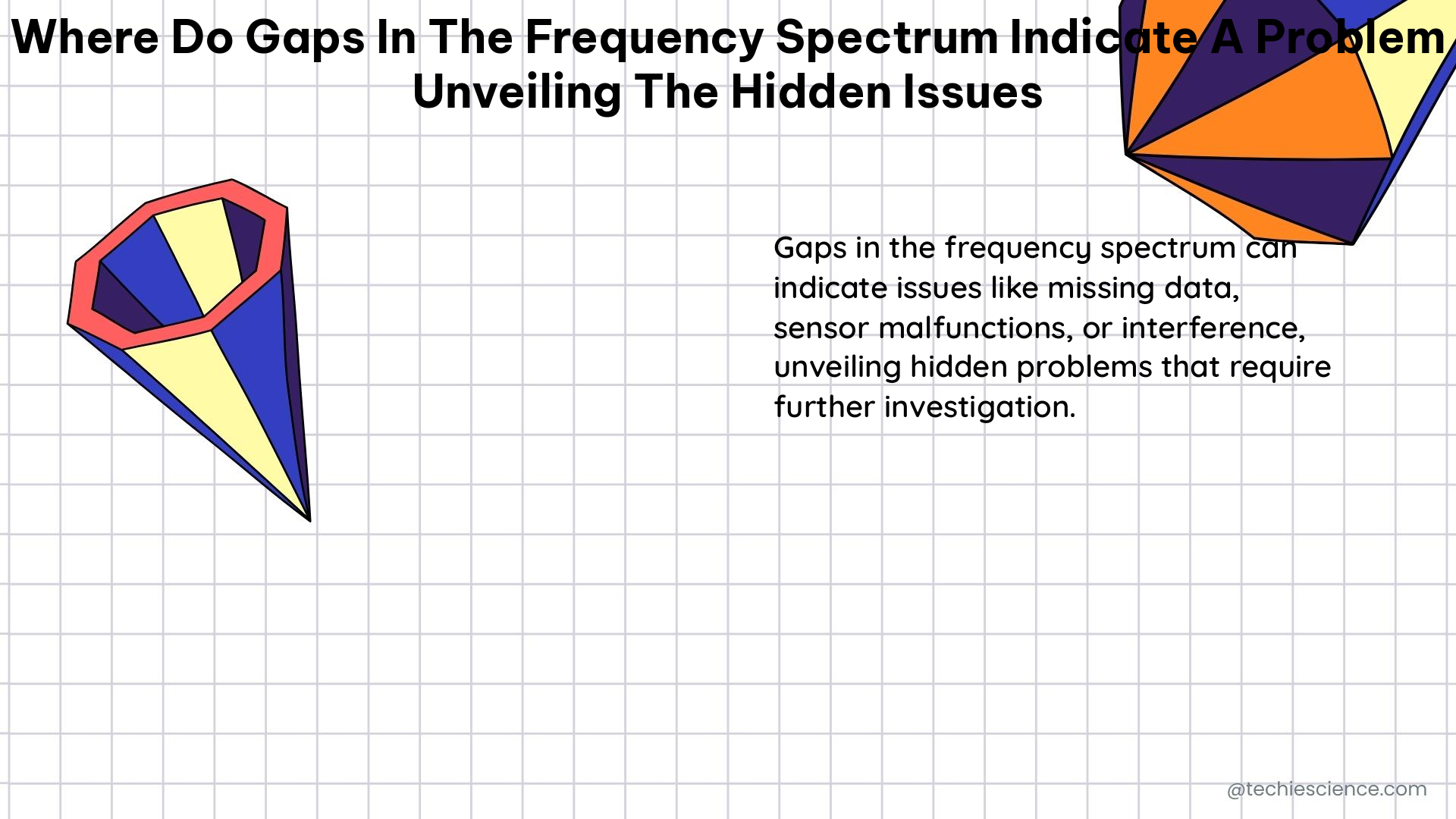Gaps in the frequency spectrum can be a telltale sign of underlying issues in various fields, from audio production to astronomy and X-ray binaries. By understanding the significance of these gaps, researchers and engineers can uncover hidden problems and develop targeted solutions to address them.
Gaps in the Frequency Spectrum: A Revealing Indicator
Audio Production: Imbalances and Clarity Issues
In the realm of audio production, gaps in the frequency spectrum can indicate an imbalance in the mix, leading to a lack of fullness or clarity in the sound. By analyzing the frequency spectrum, audio engineers can identify problematic areas and make adjustments to the mix. For example, a gap in the low-frequency range could suggest a need to boost the bass, while a gap in the high-frequency range could indicate a need to enhance the treble.
Quantifiable Data:
– A well-balanced mix typically exhibits a relatively even distribution of energy across the frequency spectrum, with minimal gaps or dips.
– Gaps of 6 dB or more in the frequency spectrum can be considered significant and may require attention.
– Analyzing the frequency spectrum with tools like Voxengo SPAN can provide a visual representation of the tonal balance, helping engineers identify and address problematic areas.
Astronomy: Unveiling Hidden Supermassive Black Holes
In the field of astronomy, gaps in the frequency spectrum can indicate the presence of hidden supermassive black holes. Researchers have found a strong correlation between the amount of dust surrounding a supermassive black hole and the strength of the radio emission produced in extremely bright galaxies.
Quantifiable Data:
– Spectroscopic observations from instruments like the Dark Energy Spectroscopic Instrument (DESI) can measure the amount of dust surrounding a supermassive black hole.
– By observing the radio signals emitted by these black holes, astronomers can uncover hidden secrets about their mass, spin, and environment.
– Studies have shown that the radio emission from supermassive black holes can be up to 100 times stronger in galaxies with higher dust content, indicating the presence of a hidden, obscured black hole.
X-ray Binaries: Uncovering Hidden Variability Components
In the study of X-ray binaries, gaps in the frequency spectrum can reveal the presence of hidden variability components. Researchers have developed a novel method for measuring the lags of weak variability components in neutron-star and black-hole low-mass X-ray binaries.
Quantifiable Data:
– Time lag analysis can uncover hidden variability components and measure their properties, providing valuable insights into the accretion process and the nature of these systems.
– Studies have shown that the time lags between different frequency bands can be as short as a few milliseconds, highlighting the importance of high-time-resolution observations in unveiling these hidden components.
– Analyzing the time lags can help researchers distinguish between different variability components, such as those associated with the accretion disk, the boundary layer, or the corona, leading to a better understanding of the underlying physical processes.
Tools and Techniques for Addressing Gaps in the Frequency Spectrum

Audio Production: Visual Analysis Tools
In the field of audio production, visual analysis tools like Voxengo SPAN can provide a gentle view of the tonal balance, helping engineers identify problematic areas and make adjustments to the mix. These tools can display the frequency spectrum in real-time, allowing engineers to pinpoint the specific frequencies that require attention.
Astronomy: Spectroscopic Observations
In astronomy, spectroscopic observations from instruments like DESI can measure the amount of dust surrounding a supermassive black hole and link it to the observed radio emission. By analyzing the spectral data, researchers can uncover hidden secrets about the mass, spin, and environment of these elusive objects.
X-ray Binaries: Time Lag Analysis
In the study of X-ray binaries, time lag analysis can uncover hidden variability components and measure their properties. By analyzing the time lags between different frequency bands, researchers can gain valuable insights into the accretion process and the nature of these systems, ultimately leading to a better understanding of the underlying physical processes.
Conclusion
Gaps in the frequency spectrum can be a powerful indicator of hidden issues in various fields, from audio production to astronomy and X-ray binaries. By leveraging advanced tools and techniques, researchers and engineers can identify and address these problematic areas, unlocking valuable insights and driving progress in their respective domains.
References:
- Unveiling hidden variability components in accreting X-ray binaries: https://academic.oup.com/mnras/article/527/3/9405/7476004
- Need advice on my frequency spectrum – It has gaps: https://www.reddit.com/r/mixingmastering/comments/16h6def/need_advice_on_my_frequency_spectrum_it_has_gaps/
- Radio signals reveal secrets of hidden supermassive black holes: https://phys.org/news/2023-09-radio-reveal-secrets-hidden-supermassive.html
- Unveiling hidden variability components in accreting X-ray binaries: https://academic.oup.com/mnras/article-pdf/527/3/9405/54762541/stad3786.pdf
- Revealing the hidden spectrum: https://www.photonics.com/Articles/Revealing_the_hidden_spectrum/a35920

The lambdageeks.com Core SME Team is a group of experienced subject matter experts from diverse scientific and technical fields including Physics, Chemistry, Technology,Electronics & Electrical Engineering, Automotive, Mechanical Engineering. Our team collaborates to create high-quality, well-researched articles on a wide range of science and technology topics for the lambdageeks.com website.
All Our Senior SME are having more than 7 Years of experience in the respective fields . They are either Working Industry Professionals or assocaited With different Universities. Refer Our Authors Page to get to know About our Core SMEs.